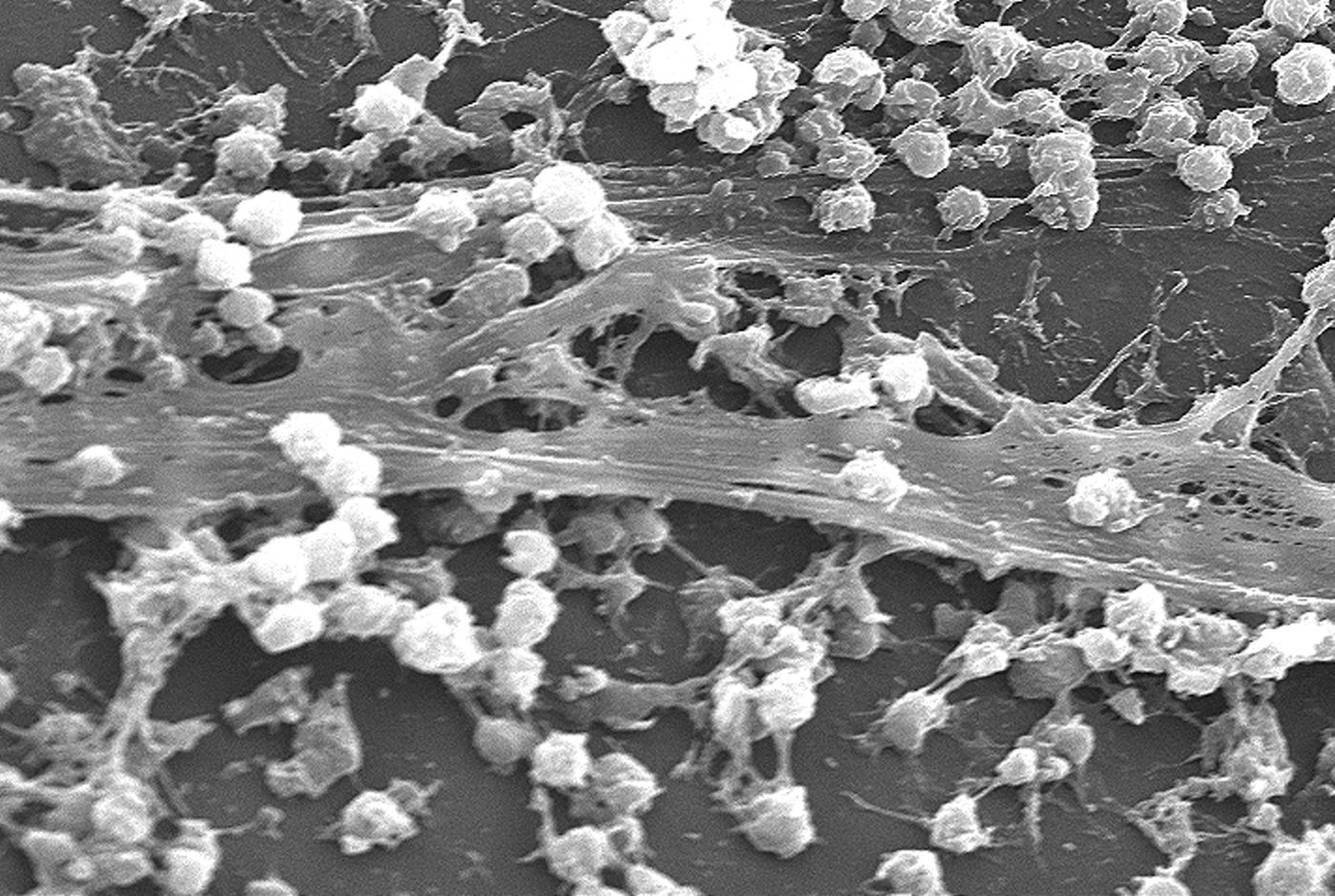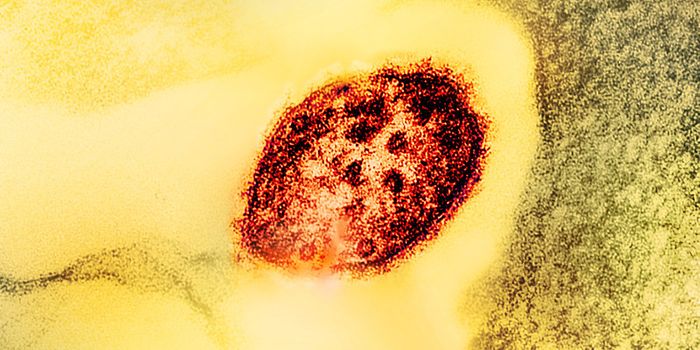Much like the bacteria that build plaque in your teeth, bacteria can colonize medical implants as slimy films that cause infections. Furthermore, these infections are often difficult to treat because the bacteria, especially those from hospitals, have become resistant to antibiotics. To reduce these types of infections, the National Institute of Health (NIH) recently awarded Clemson University scientists a
$1.57 million grant aimed at a new detection technology.

Biofilm on a catheter | Image: wikimedia
Clemson’s team hope to tackle hospital-acquired infections through a dye-based sensor that’s sensitive to the acid levels on the surface of medical implants.
"What we're attempting to do is quite challenging," said Jeffrey Anker, Associate Professor of Chemistry at Clemson, and leader of the new project efforts. "We're trying to put a sensor on a plate that will be able to reside in a human body for a reasonable period of time in order to monitor changes in local acidity that will detect infection. Bacteria produce a lot of acids. A human's immune system also produces acids. So if low pH is detected on the surface of an implant, it will be reasonable to assume that the implant is infected. But our research will also delve more into these aspects to determine their validity."
In its planktonic form, the bacteria grow as single, independent cells, causing acute infections that can be treated with antibiotics. In its biofilm form, the bacteria exist as aggregated colonies that secrete a slimy film, which serves to protect them against the environment. More than 80% of infections are attributed to biofilms. In addition to growing on medical devices like dialysis catheters and contact lenses, biofilms can also dwell inside patients -- in the respiratory, gastrointestinal and urinary tracts, oral cavities, eyes, ears, wounds, heart and cervix. Because the slime protects them against antibiotics, some infections by biofilms are resistant to drugs and develop into a chronic state.
"Bacterial colonization of medical implants is a major cause of device failure and often requires device removal coupled with long-term antibiotic treatment," said Anker. "However, detection is challenging at early stages when the bacteria are localized to inaccessible regions of the implant. Our research will focus on developing sensors that will coat the implant. Then we'll use X-ray beams to scan the sensors, enabling us to detect and monitor the infection."
Most current technologies only detect bacterial infection when things get really bad for the patients. But when the infection is severe, antibiotics may not be enough for the drug-resistant biofilms. Even if the bacteria aren’t resistant, the slime surface enables some colonies to escape treatment and then sprouting new infections. “At this point, the implant typically needs to be tediously cleansed during a surgical procedure called debridement. If the biofilm isn't fully mature, this is sometimes effective. But if the biofilm has been long established, then debridement usually isn't good enough. The implant will then need to be removed and the remaining infection treated with antibiotics before a new implant is inserted,” explained Anker.
With the new research, the Clemson team hope to finally give doctors a leg-up on bacterial infections. Instead of playing catch-up with the bacteria, early detection could prompt faster and more effective treatments. And that’s important for everyone, as infections add a significant amount of burden on a health care system that’s already very stressed.
Additional source:
Clemson University press release



![[Guide] 7 Strategies to Boost Laboratory Collaboration](https://d3bkbkx82g74b8.cloudfront.net/eyJidWNrZXQiOiJsYWJyb290cy1pbWFnZXMiLCJrZXkiOiJjb250ZW50X2FydGljbGVfcHJvZmlsZV9pbWFnZV83YzBjZWIwM2Y5YzI4MmFlYzBhZDZhMTcyNTQ1ZGU3YmE4Y2MzMDYyXzUxNDkuanBnIiwiZWRpdHMiOnsidG9Gb3JtYXQiOiJqcGciLCJyZXNpemUiOnsid2lkdGgiOjcwMCwiaGVpZ2h0IjozNTAsImZpdCI6ImNvdmVyIiwicG9zaXRpb24iOiJjZW50ZXIiLCJiYWNrZ3JvdW5kIjoiI2ZmZiJ9LCJmbGF0dGVuIjp7ImJhY2tncm91bmQiOiIjZmZmIn19fQ==)






